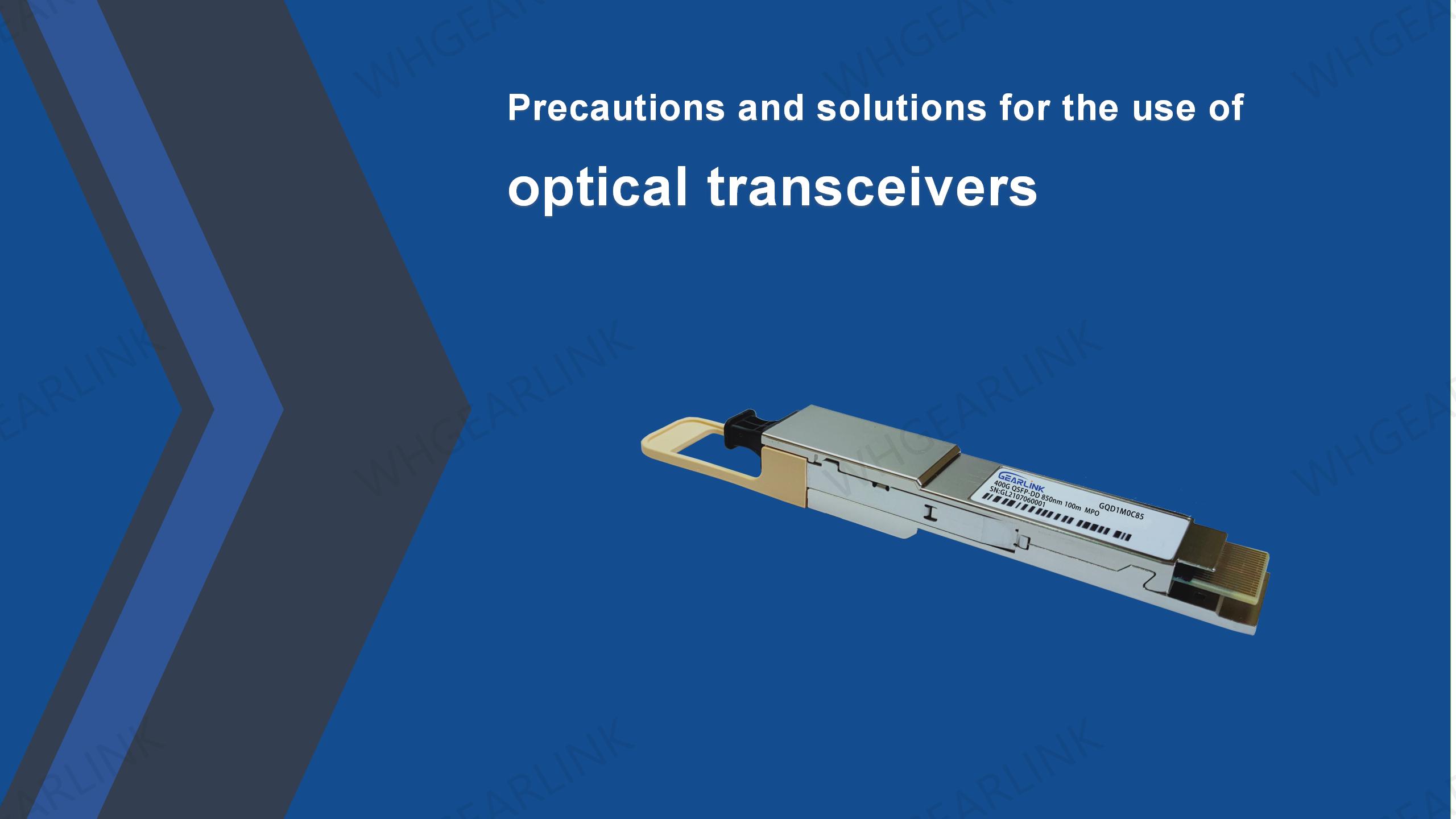
Optical transceiver s play a huge role in the field of data transmission, but there are various problems that may be faced in actual use. If we have a deeper understanding of optical transceiver s and correct usage methods, these problems can be solved well. This article will introduce some precautions and solutions for the use of optical transceivers.
Optical transceivers play a huge role in the field of data transmission, but in actual use, some common problems may occur. This article will summarize and answer these questions. In addition, we will also combine the parameters of optical transceivers and industry statistics to provide readers with a deeper understanding.
Wavelength
The wavelength of an optical transceiver refers to the central wavelength of its transmitting optical port. Common wavelengths are 850nm, 1310nm and 1550nm, CWDM, DWDM.
Rate
The rate refers to the transmission speed of the optical transceiver . The common rates are 155M, 1.25G, 10Gbps, 25Gbps, 40Gbps and 100Gbps, 400Gbps, 800Gbp, etc.
Optical power
Optical power refers to the output optical power of the transmitting port and the sensitivity of the receiving port, generally in dBm.
Transmission distance
Transmission distance refers to the longest distance that can be transmitted, which is related to parameters such as transmission medium, wavelength, and rate.
Signal transmission distance is limited
When using optical transceiver s for signal transmission, distance is a common limitation. In the case of a transmission distance greater than or equal to 80km, wavelength division multiplexing optical transceivers can be considered.
Compatibility
When using optical transceiver s from different manufacturers, you need to pay attention to whether the modules are compatible with the equipment.
The optical power is too low or too high
When using the optical transceiver , if the power is too low, it will cause signal transmission failure or signal error. However, if the power is too high, it may affect the working life of the device. It is recommended to use regular manufacturers and choose the appropriate optical transceiver according to the scene.
The temperature is too high
The optical transceiver will generate heat when it is working, and the temperature is too high may cause the module to fail. Therefore, it is necessary to select a suitable optical transceiver, such as industrial grade, commercial grade, etc. If the optical transceiver is used under severe conditions, it is recommended to purchase an industrial-grade optical transceiver .
In the field of data transmission in the future, silicon photonics technology will also become the mainstream. The advantage is that it can greatly reduce the cost, increase the bandwidth and transmission rate, and further expand the application prospect of the optical transceiver.
There are various problems that the optical transceiver may face in the actual use process, but with a deeper understanding and correct use methods, these problems can be solved well. At the same time, we also need to pay attention to the development trend and prospects of optical transceiver technology, and constantly develop better products to meet the needs of customers.

